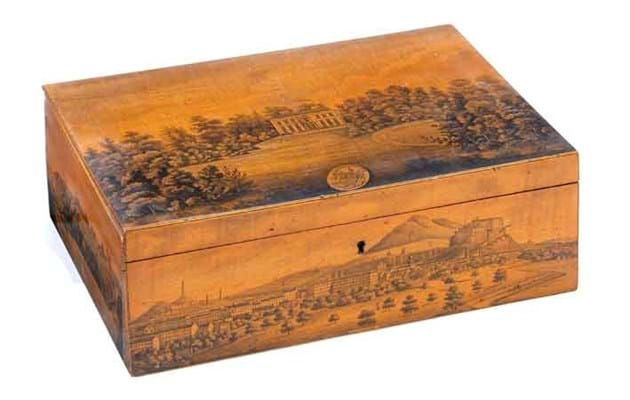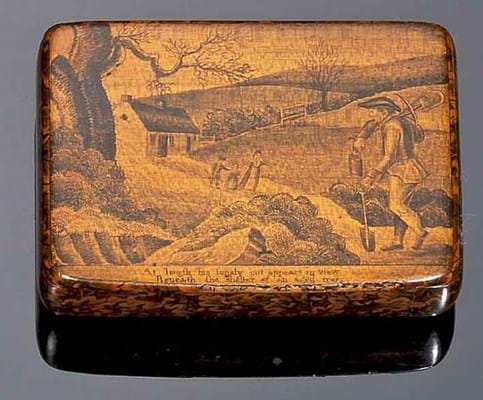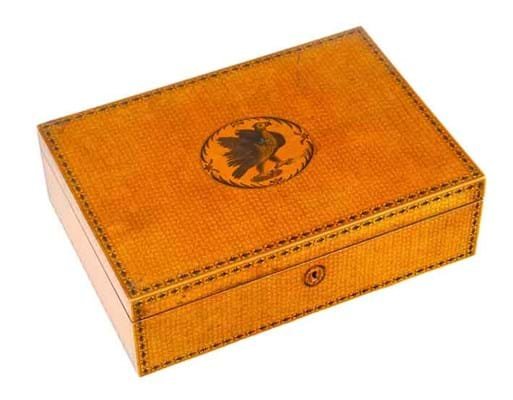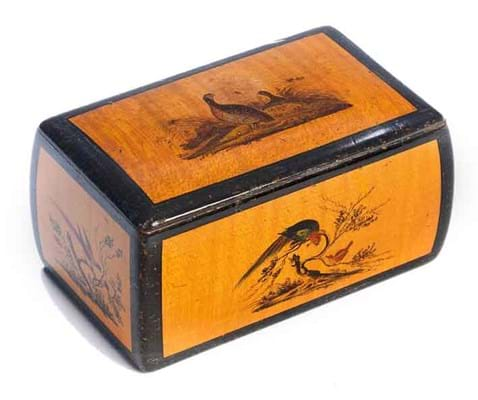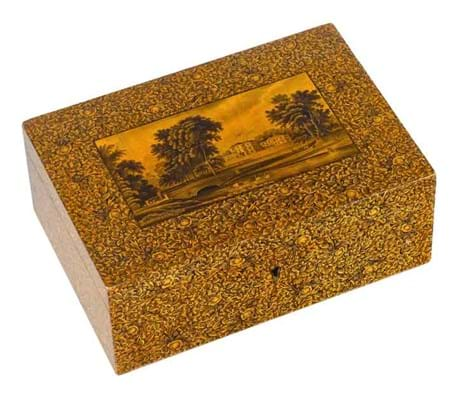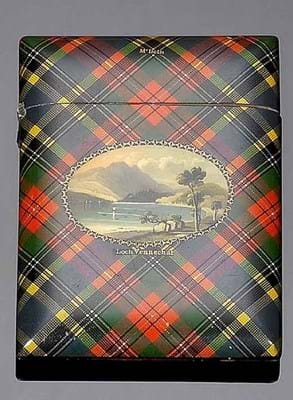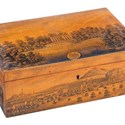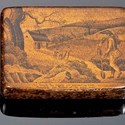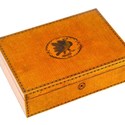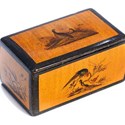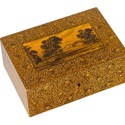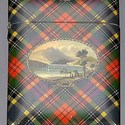But by the following decade, when he was regularly using his lunch hour to bid for 'Mauchline' at London auctions, these 19th century souvenir boxes had a growing collecting community and a name taken from the Ayrshire town where they were made until as late as 1933.
The St John Price collection of 221 lots of boxes, dominated by 208 lots of Mauchline ware, was sold by Bonhams Edinburgh (25/20/12% buyer's premium) on the first day of their winter fine sale of December 2-4.
According to Bonhams' specialist Bruce Addison, it was the largest offering of its type to come to market in the past 20 years.
The vast majority of Mauchline items seen today are engraved transfer-printed wares or other types of 'fancy Scotch woodwork' from the Victorian era such as fernware or tartanware. But from the mid 1970s, St John Price eschewed these later souvenir wares and concentrated his buying on the earliest ink-decorated pieces.
As Mr Addison said: "This was a very good quality collection and something a bit out of the ordinary, providing a comprehensive history of the decoration of these boxes."
For a relatively narrow market, this was certainly a considerable amount of material to absorb, but a crowd of dedicated collectors, and a few traders, resulted in a decent selling rate of 70 per cent and a total of £53,000.
Although a maker's name is a bonus, condition and the quality of decoration are key factors in these early boxes. Form also tended to dictate prices at the Bonhams sale.
Snuffboxes are the most commonly encountered (it was as makers of boxes for snuff that two Mauchline men, William and Andrew Smith, first set up business c.1825) but there were some larger pieces such as jewellery boxes, tea caddies and sewing boxes.
It was an early 19th century Mauchline ware sycamore and penwork sewing box by the well-known maker Charles Stiven of Laurencekirk which attracted the most attention and boasted the strongest price for the collection.
The large scale, fine decoration and impeccable condition of the piece tempted a Scottish collector to pay £5700 for the box, above a £3000-3500 estimate.
The 12in (30cm) long box was extensively decorated with a finely inked depiction of Urie House and an armorial shield to the cover, with a view of Edinburgh after Ian Clark to the front, Montrose after Thomas Ireland to the right, Cromarty Burgh to the back and Dunnottar Castle to the left.
The interior was fitted with a tray with seven lidded compartments, each painted with game birds.
The arms to the cover belong to the Barclay family of Urie, and the catalogue footnote ventures that the box was possibly ordered by Captain Robert Barclay-Allardice (1779-1854), who was known as The Celebrated Pedestrian after walking 1000 miles in 1000 hours for 1000 guineas in 1809.
Inevitably, snuffboxes tend to be in particularly worn condition, having been stuffed in their owner's pockets. The majority of prices for typical examples ranged from £150 to around £600, and a number failed to get away.
But unusually a sycamore, penwork and oak-inlaid snuff box by Paterson, Cumnock, was in immaculate condition with profuse, delicate decoration.
The 3.5in (8.6cm) box bore a central panel of Robert Bruce leading his army within a frame of alternating shields, six inlaid with oak and bearing the legend Part of the oak which has for ages been call'd Wallace tree, the other six with the words of Burns' Robert Bruce's March to Bannockburn. The base was inscribed To Thomas from John Paterson and it topped a £500-700 estimate, selling to an English collector for £1100.
There was also a Victorian Macbeth Tartanware card case painted with scene of Loch Vennechar, that sold with McPherson tartanware Book of Common Prayer, brooch in three tartans and tartan-decorated ring box for £420 (estimate £250-350).

